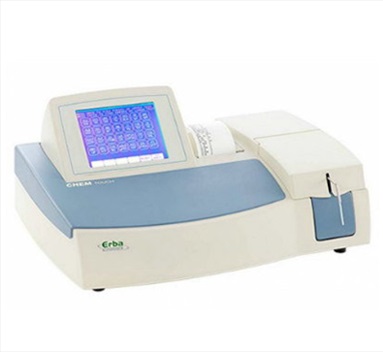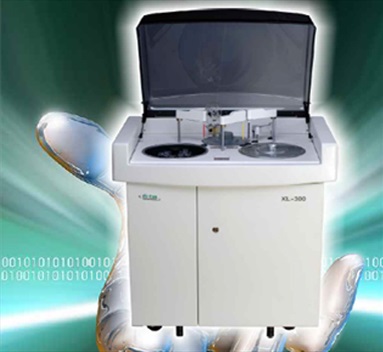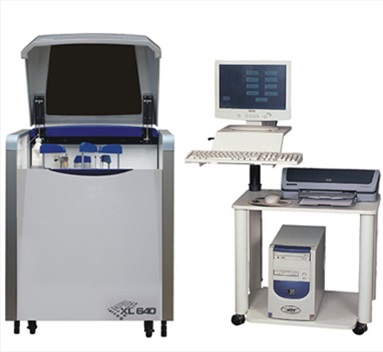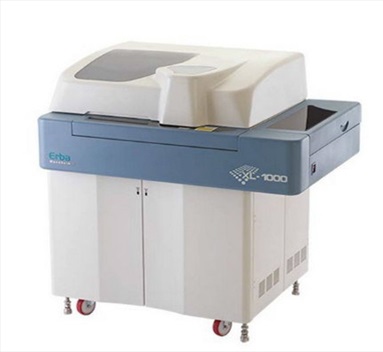- Sample volume: 2-70 μl (in 0,1 μl step)
- Reagent volume: R1 50-300 μl (in 1 μl step), R2 10-200 μl (in 1 μl step)
- Dispensing probe equipped with liquid -level sensor and crash detector
- Auto-dilution of samples and calibrators
System Type
Automatic clinical chemistry analyzer – open, random access system,
STAT samples processing
Throughput
200 photometric tests/hour
360 tests/hour with ISE
Simultaneous measurement items
Max. 45 photometric tests + 4 ISE
Sample type
Serum, plasma, urine, CSF
No. of programmable parameters
No limit on Test parameters or Calculation items and 4 ISE parameters
(Na, K, Cl, Li)
Assay methods
End-point, kinetic, ISE (direct potentiometry)
Calibration type
Linear (one point, multi point), exponential, polynomial,
factor cubic spline, Logit-Log 4P, Logit-Log 5P
Optical system
Halogen lamp, 8 filters: 340, 405, 505, 546, 578, 600, 660
and 700 nm
Reagent tray
50 refrigerated positions (8-12°C) 5, 20, 50 ml reagent containers
Sample tray
39 positions:
Outer ring – 30 position for samples
Inner ring – 9 positions for blanks, standards, calibrators,
controls and ISE solutions
Reagent dispensing
One dispensing probe with liquid-level sensor
Dispensed volumes: R1 50-300 μl – adjustable in 1 μl step
R2 10-200 μl – adjustable in 1 μl step
Minimal reagent volume
180 μl
Reaction tray
45 reusable hard glass cuvettes, optical path length 5 mm
Mixing system
Independent stirrer
QC
Levey-Jennigs charts, Westgard rules
Barcode reader
Built-in barcode reader for samples and reagents
Water comsuption
Maximum 6 litres/hour
PC requirements
Operating system: MS Windows XP or MS Windows 7,
Pentium 4, RAM 2 GB, HDD 200 GB
Power supply
220 V ± 10 %, 50 Hz ± 5%, 600 VA
Dimensions, weight
810 mm (w) x 800 mm (d) x 1 160 mm(h), 120 kg






